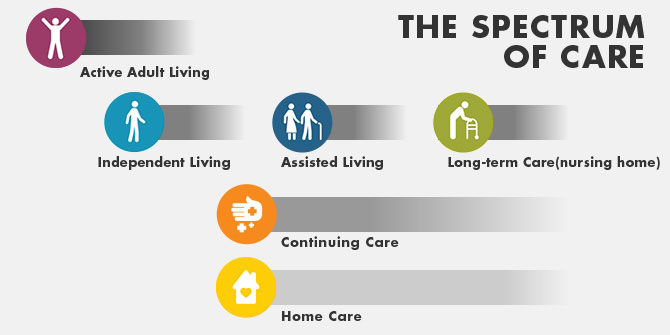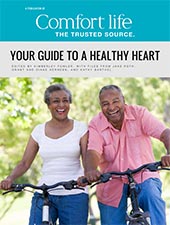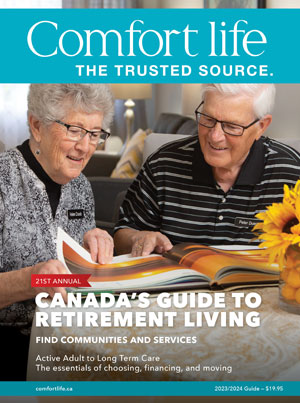Lists of reports on this page:
Find care details, insights, and insider perspectives gained from 20+ years of helping seniors and families.
What to know about this topic:
- Types of retirement living in Niagara Falls
- How much does a retirement home in Niagara Falls cost?
- Medical and safety services
- Recreation and social activities for seniors
- Getting around Niagara Falls
- Availability of retirement homes in Niagara Falls
- Choosing a retirement community
- Niagara Falls Retirement Community Regulations
The home of a world-famous set of waterfalls and the “honeymoon capital” of the world, the city of Niagara Falls, Ontario, has more to offer retired residents than tourist attractions. The region has a wealth of trails and parks, senior-centred recreation programs, a sophisticated network of health care centres and a number of excellent retirement homes. This is your guide to retirement living in Niagara Falls and area.
IN-DEPTH REPORTSRetirement communities in Niagara Falls
Queenston Place Residence
This Niagara Falls retirement home features local activities and scenery in a luxury environment offering a comfortable lifestyle, care and peace of mind.
Lifestyle Options: Independent Living, Assisted Living
Willoughby Manor Retirement Residence
Our homelike atmosphere sets the tone for our tight-knit high-spirited community. Our dedicated team provides 24 hr care & services including: health, wellness, meals, laundry, housekeeping, safety, security & more.
Lifestyle Options: Independent Living, Assisted Living
Types of retirement living in Niagara Falls
The retirement communities in Niagara Falls serve seniors and families throughout the Niagara region, from St. Catharine’s to Fort Erie. Seniors with a variety of preferences and needs can find the right care for them in Niagara Falls, as the area offers all the options on the spectrum of care (see image below) from active adult living to long-term care.

Independent Living
Independent living is generally the best option for seniors who want to remain independent but wish to take advantage of a more carefree lifestyle and the added safety and access to amenities offered in retirement living. Independent living communities offer meal plans, housekeeping, and recreational activities, and place a strong focus on the social aspect of retirement living.
Assisted living
Assisted living, sometimes called supportive living, allows residents to customize their care. This type of retirement living gives seniors the same advantages as independent living, but with more comprehensive care options (such as medication management and personal care), which allow them to age in place. The best part of living in an assisted living community is that it grows with its residents’ needs. This means seniors can stay in a familiar community and avoid the stress of moving as they age.
Long-term care and Memory Care
Added safety measures and more specialized care (such as secure floors, 24 hour nursing, night lighting and cognitive therapies) are provided in long-term and memory care. These retirement homes give seniors with more serious health challenges such as Alzheimer’s and advanced stages of dementia a safe and friendly environment to live in where they are provided with the right care 24 hours a day.
Specialized retirement options
Niagara falls and the surrounding region is also home to several more specialized retirement living options. An active adult living community (see spectrum of care), which promises resort-style living to homebuyers over the age of 50, is located near Fort Erie. Gender-specific and faith-based retirement homes, which cater to more specific preferences, are less common than the retirement home types listed above, but a ladies-only assisted living home and a faith-based retirement home both exist in Niagara Falls.
How much does a retirement home in Niagara Falls cost?
The monthly cost of living in a retirement home in Niagara Falls will vary with the lifestyle and care you or your loved one(s) choose(s). Every retirement home offers different care packages, but the average cost of a retirement home in Ontario is approximately $3,200 per month. Although some retirement homes include these services in their monthly packages, extra costs can come from meal services, laundry and housekeeping, television and telephone services and personal care. The task of figuring out which care packages and added services will best fit your needs as well as your budget can seem daunting, but you are not alone. Retirement communities can help you plan for the future and customize your care so your needs or those of your loved one will continue to be met as you or your loved one age.
Long-term care homes, which are funded by the government of Ontario, have their rates for basic accommodation set by the province. Your local Community Care Access Centre can help you and your loved one(s) find placement in a long-term care home near you, and provide more detailed cost information. Some residents of long-term care homes living in basic accommodations and who have an annual income below $21,000 may also be eligible for a rate reduction. The Ontario government can also provide assistance when it comes to home care costs or prescription expenses. Seniors with high prescription drug costs relative to their income may benefit from applying to the Trillium Drug Program. Seniors over the age of 65 who live in Ontario and have a valid Ontario health card are eligible for application.
Medical and safety services
Seniors living in the Niagara region have access to Ontario’s largest multi-site hospital amalgamation, as well as a number of wellness clinics that offer chiropractic care, physiotherapy and massage therapy. Modern retirement homes also provide their residents with health care options, and no longer need to outsource most of their care to third parties. In an emergency or health crisis, seniors living anywhere in the Niagara region from Niagara-on-the-Lake to Fort Erie are nearby to a Niagara Health System (NHS) site. The NHS has 6 sites, one of which is located in the city of Niagara Falls. The Greater Niagara General Hospital is less than 25 minutes away from anywhere in Niagara Falls, and closer to 10 minutes away from most of the city’s retirement homes. In addition to emergency care, the hospital has a cardiology department, a pharmacy, a laboratory, a dialysis centre and outpatient mental health services. A full list of services can be found on the NHS website. Well-run retirement homes make resident wellness their first priority, and the level of care they can provide is always advancing. Many of today’s retirement homes employ total health teams consisting of doctors, registered nurses, personal support workers, dieticians and activity co-ordinators in order to account for all facets of senior health. Physio- and massage therapies are also offered within some retirement homes, and more than likely residents can choose to make the community’s visiting or live-in doctor their family doctor. Although retirement communities - especially long-term care homes - can provide much of the crisis care hospitals do, and often offer respite for recovering seniors, much of the day-to-day focus in assisted and independent living is placed on preventative health care. Promoting healthy eating and active living, monitoring resident health and ensuring senior safety are the four pillars of preventative health care upheld by well-run retirement homes. A dietician or chef is responsible for planning and/or preparing meals that are both healthy and delicious and correspond with the dietary and faith needs of residents, and an activity-co-ordinator is generally on board to ensure seniors stay engaged, social, and active. Some of the other preventative health care services administered by health teams include:
- An on-site doctor, or a doctor who visits residents on a regular basis
- On-site nursing staff, often available 24/7
- An on-site pharmacy and medication assistance services
- Exercise programs with access to a personal trainer
- Physiotherapy
- Preventative wellness programs
- Recuperative programs
- Assistance with daily living activities including bathing, dressing, nutrition and mobility
- Assistance with lifestyle maintenance including outings, social engagements and pet care
- Continence management programs
- Palliative care services
As technology evolves, so does the ability of retirement homes to monitor the health of their residents and respond more quickly to potential crises. Regular check-ups and measures of blood pressure and blood sugar can be done without requiring seniors to leave their home, and some residences even do laboratory work on the premises. Lessened mobility, loss of sight and hearing and the risk of falls can make every-day activities more dangerous more difficult for seniors as they age. Retirement homes equip their facilities with emergency call systems and amenities such as 3-piece showers, non-slip floors and night-lighting to keep their residents safe. In memory care, secure floors and night checks also serve to prevent seniors with memory loss from getting lost. Other health and safety resources in the Niagara region can benefit those living at home and their caregivers. The leaf and snow buddies program, for example, pairs seniors with student volunteers that remove the snow and leaves from their property. The Alzheimer’s society of Niagara region provides adult day programs to seniors suffering from Alzheimer’s and Dementia, as well as support and resources to their caregivers. A number of private companies that specialize in in-home health care, meal delivery and home maintenance are also located in the area.
Recreation and social activities for seniors
Today’s understanding of senior health includes physical, spiritual, social and emotional health. Fortunately, staying healthy, social and active after 55 in Niagara Falls is only a matter of knowing where to look. Seniors living in Niagara’s retirement homes not only benefit from the social focus and recreation in retirement living, but can also take advantage of the many sports activities in the region, the beautiful trails of the Niagara greenbelt, and the arts and entertainment opportunities in the “Honeymoon Capital.” Retirement communities offer a large variety of activities to their residents, and have many on-site amenities and fitness and recreational facilities, including theatres, pools, fitness rooms and putting greens. Foot care clinics, spas and beauty salons can also be found at some of Niagara Falls’ retirement homes. In addition, many residences have chapels on their premises to accommodate the spiritual needs of residents. Some of the activities offered on-site in retirement living include:
- Fitness and gentle exercise classes
- Yoga and zumba
- Tai chi
- Aquafit and swimming
- Billiards
- Line dancing
- Residence parties
- Shuffleboard
- Painting and art classes
- Concerts
- Theatre performances
- Golf and minigolf
- Movie nights
- Card games and tournaments
- Volunteer opportunities
The city of Niagara Falls has a number of fantastic community resources for older adults, whether they are living at home or in retirement living. Both the city’s public library system and the Coronation Centre offer recreational programs, and opportunities to learn new skills and volunteer to the region’s 50+ adults. Offering programs at two locations for the added access to facilities, the Coronation 50+ Recreation Centre charges Niagara Falls residents a $27 for an annual membership which entitles them to participate in programs and special events. Regular exercise and the opportunity to engage with a wider network of seniors are only some of the advantages of the programs the Coronation Centre runs, from creative arts and technology courses to fitness and dance classes. All of Niagara Falls’ four libraries are fully wheelchair accessible and have E-books, large print books, audiobooks for the visually impaired and DVD’s for the hearing impaired available for check-out. The library network also runs book clubs, computer instruction courses, legal clinics and “Big Screen Tuesdays” for older adults. Online “Brain Power” games for seniors and travel resources are also available on the library website.
Niagara Falls is a favourite tourist destination for its unique natural features as well as its museums and arts and entertainment scene. However, visitors to the city’s attractions are not limited to tourists – retirement homes often organize outings for their residents to some of Niagara’s most popular destinations. A trio of museums is run by the municipality – the Niagara Falls History Museum, Battle Ground Museum and Willoughby Historical Museum all showcase a different aspect of the region’s rich history. The cost of passes is reduces for senior visitors.
Seniors with a passion for the arts can also enjoy the city’s 24 art studios and the annual Shaw festival. No description of recreation in Niagara Falls would be complete without mention of the spectacular falls and the natural beauty of the escarpment. Agrotourism is one of the largest industries in the area, and family farms, garden centres, green space and the year-round Sunday Morning farmers market are a large part of the appeal of living in Niagara Falls. Walking tours, day-trips to local shopping areas and markets and even wine tours are popular outings with retirement home residents. Seniors that enjoy outdoor sports, cycling, hiking, jogging or simply going on a walk can also take advantage of more than 80 parks and trails in the area and enjoy the beauty of the many gardens and natural scenery in every season.
Getting around Niagara Falls
The Niagara greenbelt is home to many beautiful cycling and walking trails that active seniors can enjoy, and shopping and basic amenities are in walking distance of all the retirement homes in Niagara Falls. However, the region’s inter-municipal bus routes make it easier to travel longer distances. The Niagara region bus service offers year-round route service Monday through Sunday in Niagara Falls, Welland, Fort Erie, St. Cathrine’s and Port Colbourne. All buses are equipped with priority and courtesy seating and offer slightly reduced fares for senior patrons. The chair-a-van service provides accessible transit to Niagara residents unable to use the conventional transit service. Seniors must apply for the chair-a-van service and book rides in advance in order to use the accessible-door to accessible-door service. Most retirement homes also have their own buses for outings, and seniors who drive generally receive reserved parking spaces or free parking.
Availability of retirement homes in Niagara Falls
As the senior population continues to grow, so does the demand for retirement homes throughout the province. Although the vacancy rate for retirement suites in Ontario increased slightly over the 2014 year, it still sits at a relatively low 13.9 percent. This means that you or your loved one may have to spend time on a wait list before moving into your chosen retirement home. Keep in mind that the following factors can often inform the length of wait times: •Crisis placement (if someone’s safety poses immediate risk) •Type of accommodation: basic, semi-private or private or secure floor (Private or semi-private are more expensive but have shorter wait-times) •Gender •Medical care needs i.e. tube-feeding •Unit designation- secure, non- secure
Choosing a retirement community
Choosing a retirement community is a matter of research and preparation. One of the most important aspects of the search is asking questions. First, begin to ask yourself and your loved one(s) the following four questions.
- What do you need
- What do you want?
- What is your preferred location?
- What can you afford?
You can visit our page for seniors considering a retirement home for a more comprehensive list of questions to consider in advance. If you are unsure what kind of care you will be able to afford, use our retirement calculator. Once you’ve defined your wants and needs and put your finances in order, you can start to make a short list of retirement homes and begin touring. Remember that once again, asking questions on your tour is one of the most important parts of the process. For a full list of questions to ask, download our free e-book on the ultimate retirement tour guide. Start your search today by using our advanced search or contacting the residences in Niagara Falls shown above. If you aren’t ready to get started, visit our advice guide for a step-by-step guide to choosing a retirement home.
Niagara Falls Retirement Community Regulations
Senior safety is always a priority when searching for a retirement home, and many seniors and their families wonder how they can be sure a retirement home will be a safe, clean and friendly environment. The province plays a big part in regulating retirement communities and keeping seniors safe, but it is also a good idea to look for an accredited retirement residence. All of Ontario retirement homes are subject to regulations set by the Retirement Home Regulatory Authority and must undergo ongoing inspections to ensure they are maintaining a high standard of safety and cleanliness in order. In order to ensure you or your loved one(s) will stay safe and be properly cared for, always make sure to check that the community you are considering is licensed by the RHRA.
Membership in other regulatory bodies is a further sign that a retirement community will be safe and well-managed. Industry experts recommend looking for a retirement community that is a member of one or more of the following trusted associations:
- The Ontario Retirement Communities Association (ORCA)
- The Ontario Long-term Care Association (OLTCA)
- AdvantAge Ontario (formerly the Ontario Association of Non-Profit Homes and Services for Seniors: OANHSS)
- The Canadian Association of Retired People (CARP)





